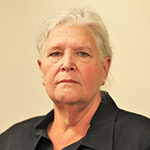Two-way traffic could ‘strengthen the heart of downtown’
Dave Thompson

The Quad Cities added 6,000 jobs in 2022 and saw millions of dollars in business investment despite ongoing economic challenges.
And while overall employment was flat in the U.S. and the local region in the fourth quarter, economic growth continued at just under 3% and inflation slowed – which, along with other key indicators, suggest a feared recession may not materialize.
Those were among…

Get immediate, unlimited access to all subscriber content and much more.
Learn more in our subscriber FAQ.
Do you want to read and share this article without a paywall?
